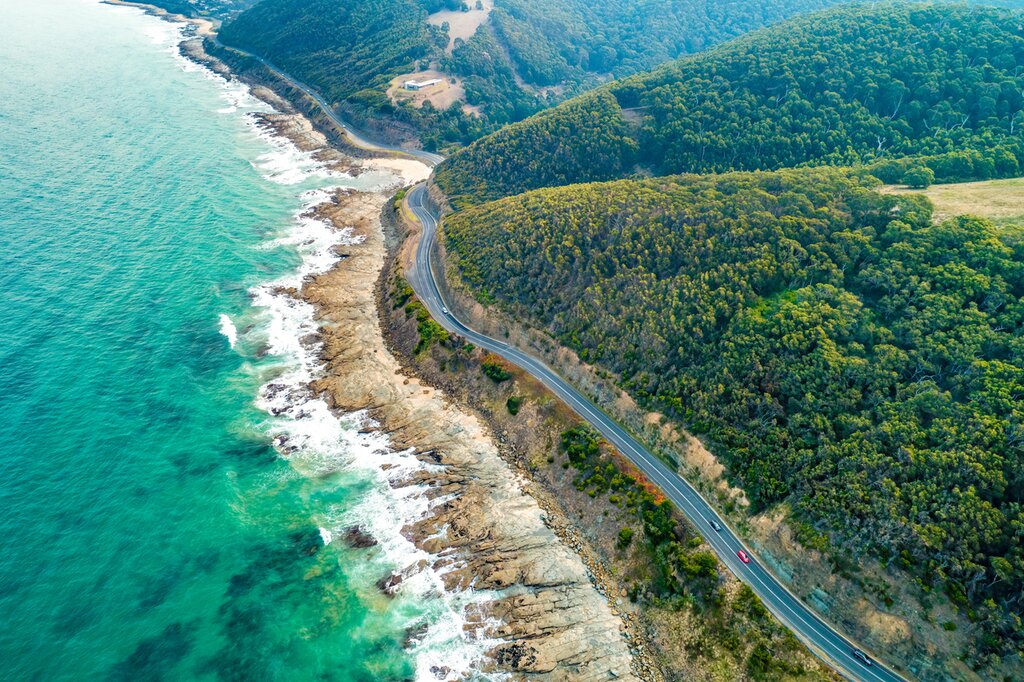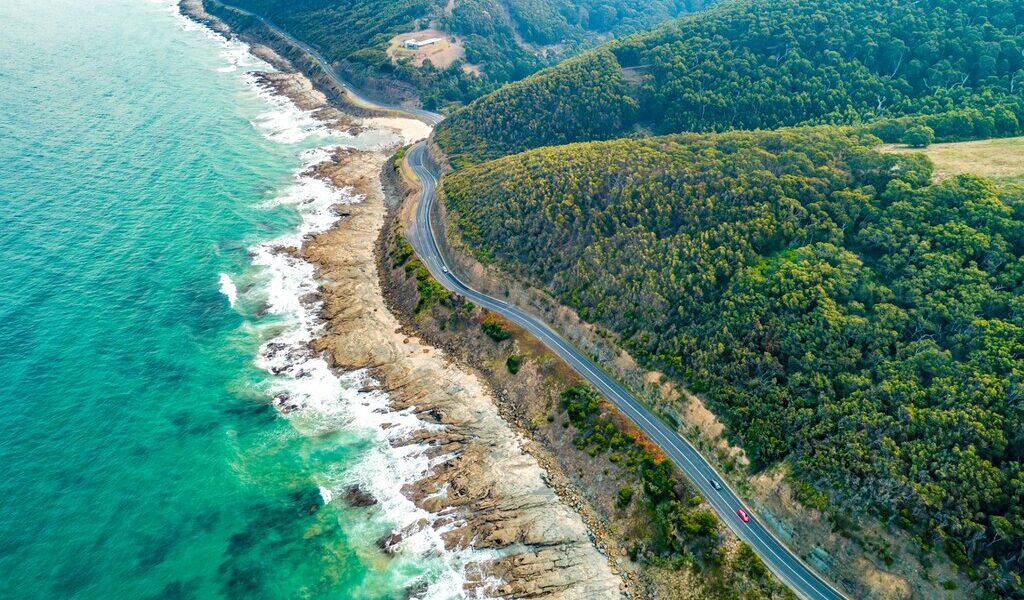
February is mid-summer in Australia, so temperatures across the country range from warm to incredibly hot. But, as many Australians will have returned to school and work after their holidays in January, some tourist hot spots will be quieter, and although it’s still peak season, you can avoid the highest of the season’s prices.
Australia in February: A Comprehensive Guide
Weather in February
Australia, a land of vast dimensions and diverse landscapes, presents a remarkable spectrum of weather conditions and climatic variations. While the summer season generally brings warmth across the continent, February tends to offer a slight respite, registering temperatures that are subtly cooler than those experienced in January for many locations. However, this difference is often so minimal that it goes largely unnoticed by most visitors and residents alike.
In coastal urban centers such as Sydney and Melbourne, the average high temperatures typically hover around a comfortable 78°F (25°C). Despite these averages, it’s not uncommon for these regions to be swept by heatwaves, causing temperatures to surge dramatically, often exceeding 100°F (37°C). The humidity levels in coastal areas further contribute to the perception of heat, making even relatively moderate temperatures feel considerably more oppressive. Nevertheless, the presence of beautiful beaches provides a welcome escape, offering a refreshing retreat from the sweltering conditions.
During the Australian winter months, a clear trend emerges: temperatures tend to decrease as one travels further south. However, this pattern does not necessarily hold true during the summer. Inland regions of Victoria and South Australia are known to experience some of the highest temperatures in the entire country during February. For those seeking to evade the intense heat, the southern island of Tasmania presents an appealing alternative, typically boasting cooler temperatures than the mainland. In Hobart, the capital city of Tasmania, the average high temperature in February is a pleasant 70°F (21°C).
It is strongly advisable to avoid venturing into the desert or outback regions of Australia in February without adequate preparation and precautions. Staying out of direct sunlight is crucial. While a carefully planned trip to Alice Springs or Uluru may prove enjoyable, attempting a cross-country road trip through the outback during this time can be fraught with danger. Alice Springs experiences an average high temperature of 95°F (35°C) in February. In Coober Pedy, a town in South Australia, many residents have adopted an unconventional lifestyle, residing in underground dwellings to escape the extreme heat, where temperatures commonly soar to 107°F (46°C) during the summer months.
Venturing further north in Australia during February typically translates to an increased likelihood of encountering wetter conditions. Darwin and Brisbane, along with various areas within Northern Queensland, experience significant rainfall during this month, although the amount of precipitation is generally slightly less than that observed in January. Flooding is a relatively common occurrence in Queensland during the summer season. While southern cities like Sydney and Melbourne may experience some rainfall during the summer months, this period is statistically drier compared to other times of the year.
Crowds and Costs in February
February marks the peak of the tourism season in numerous parts of Australia. This is due to the influx of travelers from the Northern Hemisphere seeking refuge from their winter. However, it’s important to note that February is generally not as busy for domestic travel within Australia. Australians tend to take their summer holidays during the Christmas and New Year period, and schools typically resume classes towards the end of January. While booking flights, transportation, and accommodation well in advance remains a wise decision, securing these arrangements is usually less challenging compared to traveling during January.
Beach culture is deeply ingrained in Australian society, and a favorite pastime involves spending time at the beach. Popular coastal destinations like Sydney, the Gold Coast, Noosa, and Byron Bay will undoubtedly experience crowds at times during February. However, renowned beaches such as Bondi Beach in Sydney are generally more crowded on weekends than weekdays, as local residents return to work after their summer vacations.
Where to Go in February
For most travelers, sticking to the coastline of New South Wales (including Sydney) and Victoria (including Melbourne) or exploring the island of Tasmania will offer the most comfortable experiences during February. Perth, situated in Western Australia, may be hot, but the region benefits from minimal rainfall and boasts stunning beaches. While these locations can experience periods of intense heat, there are ample opportunities to seek relief, such as visiting beaches or enjoying the air-conditioned environments of indoor attractions during heatwaves.
If you are interested in visiting the “Red Centre” to marvel at Uluru and other outback attractions, it is recommended to fly to these destinations rather than attempting an overland journey. Darwin and Northern Queensland are generally not ideal destinations to visit in February due to the high levels of rainfall. However, if you plan to explore northern regions during this month, it is crucial to be aware that swimming in the sea is prohibited in many areas due to the presence of deadly box jellyfish. These dangerous creatures inhabit the waters of north Queensland and northern Western Australia from November to May.
What to Do in February
February represents the prime time to enjoy the beaches in many parts of Australia. However, as previously mentioned, it is essential to avoid swimming in the sea further north due to the extreme risk posed by box jellyfish encounters. City beaches in Sydney (Bondi, Manly) and Melbourne (St. Kilda) provide convenient and attractive options for visitors staying in the city, offering easy access and a pleasant atmosphere. You could spend the morning exploring a museum and then unwind on the beach in the afternoon. New South Wales and Victoria boast extensive and picturesque coastlines, offering a wide range of options for those seeking more remote or small-town beach destinations, including the New South Wales Central Coast and North Coast.
Outdoor enthusiasts can indulge in hiking or gentle sightseeing in the Blue Mountains west of Sydney, the highlands of inland New South Wales and the Australian Capital Territory/Canberra, and Tasmania. Tasmania is an excellent choice for those seeking rugged, long-distance trekking experiences, with almost half of the island designated as protected land. While conditions are generally warmest during the summer months, it is essential to be aware that Tasmania has experienced devastating bushfires in recent years, so it is advisable to stay informed about current conditions while you are on the ground.
For those seeking to enjoy big-city attractions with the added comfort of air conditioning, Australia’s cities offer a wealth of options. The museums, galleries, shops, restaurants, theme parks, zoos, and aquariums are all top-notch. Families may wish to visit the Gold Coast, which is home to numerous amusement parks, including water parks, that are sure to delight children.
Events in February
**Sydney Gay and Lesbian Mardi Gras**: Sydney hosts the Mardi Gras, a grand festival that spans most of February. The celebration culminates in a dazzling parade through the city center, uniting people from all walks of life.
**Chinese New Year, nationwide**: Australia, particularly Sydney, has a significant Chinese population, and Chinese New Year is celebrated with great enthusiasm. Sydney’s Chinatown is a must-visit location to experience the vibrant festivities. The festival often takes place in February, although it sometimes falls in late January.
The new word count is 1297
B-112

